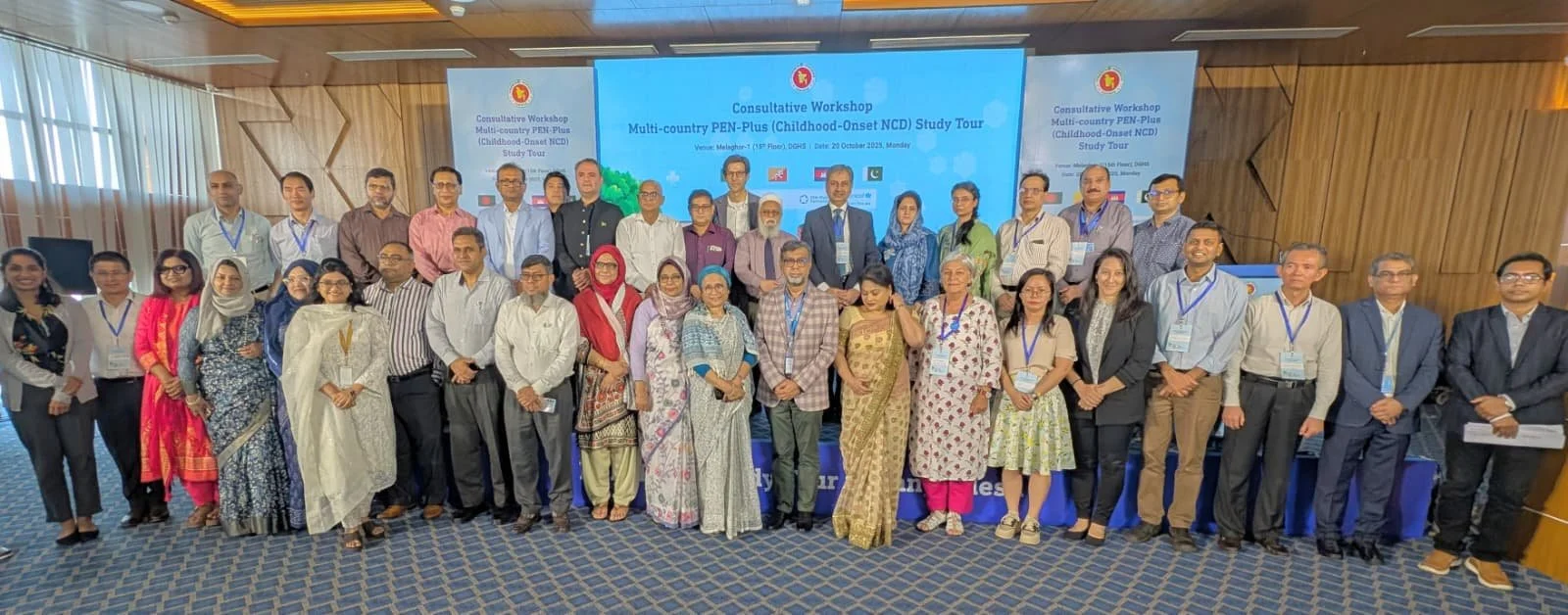Bangladesh Study Tour Reveals a Strong PEN-Plus Foundation
An October study tour was a landmark event for Bangladesh’s PEN-Plus program, which began just last February and already is expanding operations in two districts. The study tour hosted health leaders from Bhutan, Cambodia and Pakistan.
A recent study tour in Bangladesh showed the strong work of a relatively young PEN-Plus program that—amid dense populations that crowd hospitals and disease profiles that differ from those in other PEN-Plus countries—is poised for growth, reflecting the adaptability of the integrated model of care for noncommunicable diseases.
UNICEF Bangladesh organized the late October study tour in collaboration with the country’s Ministry of Health. The 20-person delegation included health leaders from Bhutan, Cambodia, and Pakistan, along with NCDI Poverty Network leaders.
The Bangladesh PEN-Plus program, which began just last February and is still in its pilot phase, has facilities in two districts: Bagerhat, which has coastline on the Bay of Bengal in the country’s south, and Kishoreganj, a smaller, landlocked region farther north. Each district has a PEN-Plus “NCD corner” in a hospital. The country’s PEN-Plus program also includes health facilities in 17 upazilas, or subdistricts, across Bagerhat and Kishoreganj.
“The program has a lot of great structure and bones moving forward,” said Dr. Shela Sridhar, South Asia regional advisor for the NCDI Poverty Network.
Dr. Gene Bukhman, co-chair of the Network, noted that a district-level hospital in Bangladesh has a catchment area of around 3 million people—equivalent, population-wise, to a provincial-level hospital in an African health system. Large catchment areas stem from a dense population: Bangladesh is home to about 1,350 people per square kilometer, compared to about 500 people per square kilometer in Rwanda, for example.
Dr. Sridhar said the crowded facilities make access to medicine and supply chains key issues, along with ensuring patients don’t get lost to follow-up when referred to larger facilities.
“The leaders of Bangladesh’s PEN-Plus program are doing a lot of work around de-fragmentation,” Dr. Sridhar said. “There has been a lot of separation between primary-level and district-level care, and definitely with tertiary-level care.”
During a late October study tour organized by UNICEF Bangladesh, in collaboration with the country’s Ministry of Health, delegates including health leaders from Bhutan, Cambodia, and Pakistan posed with NCDI Poverty Network leaders and partners.
Dr. Neil Gupta, senior director of policy for the Network, noted that while Bangladesh has no sickle cell disease, its population has a high rate of thalassemia, a genetic blood disorder. Asthma and congenital heart disease rates are high in the country as well.
Dr. Gupta said a steering committee is forming national guidelines around six primary noncommunicable diseases. He added that the leaders are working to improve community-level care and patient monitoring, with a boosted community health worker program.
“We’re excited about the possibilities,” Dr. Gupta said. “Bangladesh’s PEN-Plus program has done an amazing job of establishing a really solid foundation in their first year.”


